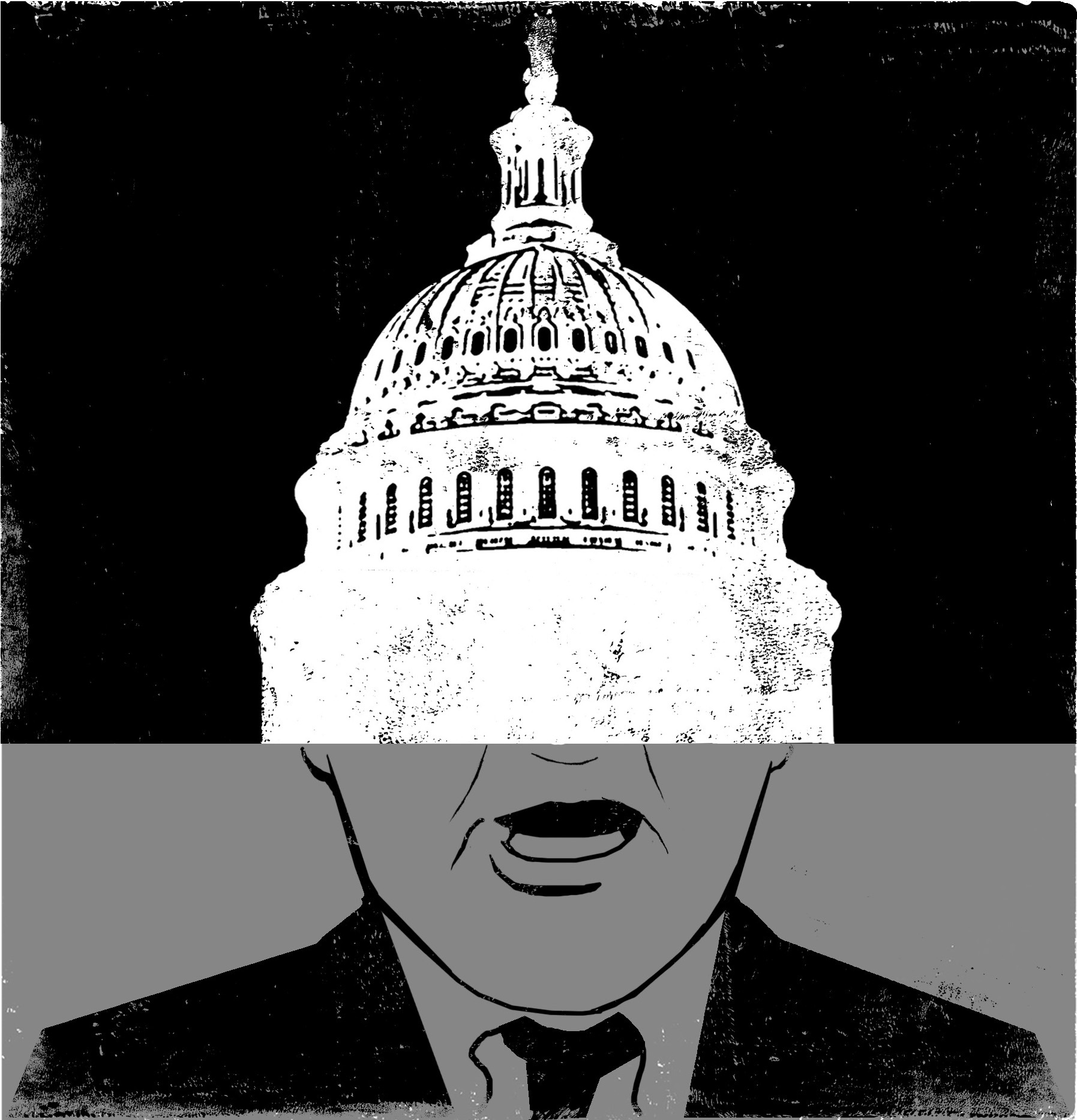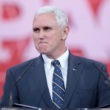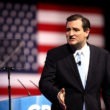Image Credit: Edel Rodriguez
The grumpy old man with the disheveled hair has revealed himself a veritable political juggernaut. In Iowa, Bernie Sanders fought Hillary Clinton to a near tie. In New Hampshire, he rolled to a 22-point victory. It is an extraordinary vindication of an argument liberal Democrats like me have been making since the 1980s, when the Democratic Leadership Council leveraged a truism—candidates win by capturing the center of the electorate—into a bamboozlement: that for the Democrats, “moving to the center” meant moving closer to Wall Street and abandoning the party’s populist traditions.
Sanders has been proving the counterargument in spades, to the shock of the political establishment. Make full-throated appeals to ordinary people’s economic interests and frame what Teddy Roosevelt called “the malefactors of great wealth” as the enemy, and you could crack the political world wide open.
Look at the facts. Last summer, FiveThirtyEight’s Nate Silver blithely pronounced Sanders was sunk because there weren’t enough self-identified liberals to vote for him—by which he meant “affluent white cosmopolitan.” Now, however, the punditocracy’s other data-driven Nate, Nate Cohn of The New York Times, dared to actually look at the Iowa data. He found Sanders “fares much better among less affluent whites than Mr. Obama did eight years ago, suggesting he’s attracting a group that traditionally supports more moderate establishment candidates.” Given, he says, that “idealistic liberal outsiders”—Cohn’s former pigeonhole for Sanders—traditionally don’t do well among lower-income whites or lower-income blacks, he wonders whether a dam hasn’t broken already. And he speculates that “the assumption that Mrs. Clinton will easily maintain her strength among nonwhite voters may be shakier than once thought.” (My emphasis.) That’s Sanders’s argument: that he’s uniquely positioned to assemble a cross-racial coalition of lower-income voters. And, even Republican voters—which I myself discovered anecdotally was not a pie-in-the-sky notion. In my reporting in Texas and Indiana this past summer, I kept meeting Republicans who called themselves Sanders fans—one of whom labeled him a “moderate.”
So why am I not celebrating?
I like Sanders. I love that he’s hammering home this lesson— that populism is popular—to frightened Democratic elites. I’m gobsmacked that in a mere matter of weeks, he has upended a generation’s cobweb-encrusted psephological clichés. What’s more, I distrust Hillary Clinton, and I fear the message that would be sent to those selfsame Democratic elites by the success of a candidate for whom four of the five top contributors to the $712.4 million she’s raised for her campaigns since 2000 were banks.
I just fear what will happen if Sanders becomes president: precisely because he’s proving the economic populism argument right.
I made a detailed argument about the power of economic populism to strengthen the Democratic Party in an essay in the Boston Review in 2004, later published with responses in a book called The Stock Ticker and the Superjumbo: How the Democrats Can Once Again Become America’s Dominant Political Party. I compared political parties to corporations. The most successful ones, historically—the great ones—built long-term value by developing a reputation for innovative, quality products. More and more, however, beginning with the rise of the modern “go-go” stock market in the 1960s, companies began the practice of impressing short-term investors by measuring success in quarterly increments, via expediencies like selling off slow-moving divisions, liquidating excess capacity, and trimming research and development. David Halberstam explained in The Reckoning, his classic history of the auto industry, how the Big Three Detroit automakers destroyed themselves in precisely this way.
My worry is that the Democrats don’t even keep the big ideas lying around anymore.
After the traumas of the Reagan years, that was how the Democrats began to go about things, too: they grabbed desperately at whatever initiative—or abandoned whatever initiative—they felt it would take to nose enough “swing voters” temporarily into their column to garner 50 percent plus one in the next election. But a swing voter is like a short-term shareholder—ready to sell the next time some other blandishment comes along.
As the alternative, think of the Democrats who created Social Security in 1935—it is still delivering loyalty to Democrats 80 years later. As is Medicare, which was passed in 1965. If it fulfills its promise, Obamacare might still be manufacturing Democrats decades hence.
I called such programs “superjumbos.” But one characteristic of a superjumbo is that a president doesn’t just order one out of a catalogue. They are almost by definition long in gestation. Much of the great social legislation of the New Deal was conceived in the Progressive Era. All the extraordinary string of laws Lyndon Johnson passed in the first two years of his presidency, like the first bill providing federal aid to education, and Medicare and Medicaid, had been in the hopper for a generation or more—even back to Theodore Roosevelt.
The Great Society’s progressive momentum was abruptly halted by the backlash against civil rights, a story I told in my book Nixonland. But I also missed something in Nixonland—the superjumbos kept coming, only in different form. Starting in 1966 with the National Traffic and Motor Vehicle Safety Act (its seat-belt requirements save 10,000 lives a year), the Federal Hazardous Substances Act, the Federal Meat Inspection Act, the Truth in Lending Act, and continuing through the Nixon presidency with the Federal Coal Mine Health and Safety Act, the Occupational Safety and Health Act, and the National Environmental Protection Act, Democrats wrote an entire new story in America’s books of law: that the federal government could act aggressively to protect consumers from corporate malfeasance.
“Consumer legislation” was an entirely new category of statute—but, just like the New Deal and Great Society social legislation, political entrepreneurs, both inside Congress and in the advocacy community, had been working to advance it for years, in faith that their moment would come. In May 1969, for example, only 1 percent of those polled considered “pollution/ecology as an important national problem,” according to University of California, Berkeley, professor David Vogel’s Fluctuating Fortunes. But by December 1970, a survey revealed that the same problem ranked number one in the public’s concern. Senators like Gaylord Nelson of Wisconsin and Maine’s Edmund Muskie were ready to act; meanwhile, President Nixon, helpless before the power of public opinion, had no political choice but to go along.
To me, this history reveals the frustrating paradox at the heart of Sanders’s success. The very thing that makes it so exciting—a Democrat dreaming big dreams and who’s rewarded with burgeoning political success beyond anyone’s prediction but his own—is also what makes for such a stark contrast with the rest of the Democratic Party. The fact is that Sanders is nearly alone. In our generation, the dreamers have been the conservatives in the Republican Party. As one of them, Milton Friedman, put it in a quote made famous by Naomi Klein’s The Shock Doctrine, in a crisis, “the actions that are taken depend on the ideas that are lying around. That, I believe, is our basic function: to develop alternatives to existing policies, to keep them alive and available until the politically impossible becomes the politically inevitable.”
The fact is, we are in a crisis: the crisis of a collapsing middle class. It exploded into view with the economic collapse of 2008. We’re told incessantly that the economy has since “recovered”; however, not everyone has recovered with it. Reports abound, but here is one grim set of metrics: according to a study published last December by Princeton economists Angus Deaton and Anne Case, between 1999 and 2013, the midlife mortality rate for whites with no more than a high school education increased at rates unprecedented in modern times. Suicide and substance abuse were cited as the main drivers.
My point is not to complain that laws adequate to the crisis have not been passed. I know as well as anyone that the lunatics running the Republican Party have choked the life out of the legislative process. Passing ambitious laws is presently impossible.
My worry is that Democrats don’t even keep the big ideas lying around any more.
My fear is the fact that, on January 20, 2017, a President Sanders would be inaugurated politically naked and alone—commanding a party apparatus less prepared ideologically, institutionally, and legislatively to do great things than at any time in its history.
Immediately the reader thunders back at the historian: Don’t you understand what you’re asking? Don’t you understand how badly Washington is broken? Isn’t it a fantasy that if we just elect principled progressives they can break the legislative stalemate? Isn’t that “Green Lanternism”—the currently fashionable term for liberals demanding too much of their politicians, or for idealists who don’t understand, as New York Times columnist Paul Krugman recently put it, “How Change Happens”?
But change happens when it’s made to happen, and historians understand that sometimes history turns on a narrow pivot.
The very thing that makes Sanders so exciting—a Democrat dreaming big dreams, rewarded with burgeoning political success beyond anyone’s prediction but his own—is also what makes for such a stark contrast with the rest of the Democratic Party.
In 1963, the most widely read and influential book in Washington, The Deadlock of Democracy, complained that the congressional process in the United States, especially the prospects for progressive legislation, were worse than any time in our history. Many of the reasons cited in the 1960s are identical to the ones we perceive now. We see the radically undemocratic nature of America’s constitutional system, where senators from states representing 10 percent of the population can filibuster any law favored by senators from the 90 percent; the ideological gerrymandering that renders the House of Representatives unresponsive to the people’s will; and the roadblock of a conservative majority in Congress (in those days, a coalition of Southern Democrats and Northern Republicans).
Then, the next year, 1964, the floodgates opened, inaugurating a decade of superjumbos.
How did that happen? The reasons, of course, are complex. My bottom line, however, is that when the opportunity arose, progressives had their tools ready. They didn’t say, “we don’t have the votes.” They just kept reintroducing the pie-in-the-sky bills they’d been introducing session after session. That’s what made them progressives.
Now, the situation is reversed, and Clinton’s campaign has given us the perfect case study to demonstrate how. She has offered as her signature campaign pledge no new taxes on any household making $250,000 or less. It’s a nice promise to make to the approximately 95 percent of Americans who fall below that threshold—some of them, conceivably, are swing voters in the general election.
This is smart, right? People hate taxes! Isn’t that the long and short of it?
It’s actually not so simple.
In a recent Gallup Poll, 51 percent of respondents say their taxes are too high, while 42 percent say they’re about right. This is a major change from 1999, when 68 percent thought their taxes were too high. In that same poll, 62 percent of upper-income voters thought their tax burden was too low. That makes perfect sense, considering that tax rates are at their lowest in nearly 35 years.
What this means practically is that increasing taxes on top earners is the political center now—and that despite this, a President Clinton would insist on entering office wearing a fiscal straitjacket. That could keep her from expanding Obamacare to cover the 33 million Americans who are still uninsured. It could prevent her from supporting the paid-family-leave bill introduced by Senator Kirsten Gillibrand—an idea supported, in one poll, by 83 percent of respondents, including 67 percent of Republicans. (Now that’s a superjumbo. And while Clinton claims she has her own ideas for paid family leave, nobody knows how she would pay for it.)
She is running as “the progressive who gets things done.” But when it comes to the things that matter, she won’t be able to get anything done at all; this is virtually the central premise of her campaign. What, to take one example, could she do to keep poor middle-aged white people from drinking themselves to death? Clinton is systematically denuding the possibility of addressing the most profound social crises of our era, all in a short-term play for swing votes.
So the veritable tie between Sanders and Clinton implies a three-pronged dilemma.
The first, bluntly, is the possibility that the centrist scolds are right, and that a Sanders nomination will result in a Republican landslide. I honestly don’t know that they’re wrong.
The second is that Sanders becomes president, and tries to govern at radical odds with a Democratic Party that doesn’t even known how to speak his language—or, historically, its own. And presto! An even worse deadlock of democracy than the one we have now.
The third is a President Clinton and a Democratic Party deaf to the lessons of Sanders’s ascent: that populism is popular, and is the only thing that can save us now—let alone the next time an economic crisis strikes.
HRC: Candidate of the Past?
By promising no new taxes for American households earning under $250,000—limiting new revenue to tax increases on only five percent of the population—Hillary Clinton has all but guaranteed that she can make no contribution to addressing the central crisis of our time: inequality.
She seems to derive her strategy from bygone days, when “bracket creep” due to inflation sent voters scurrying from the “tax and spend” Democrats. Now, however, tax rates are at their lowest in 35 years, and the progressivity of the system is at its flat-test since the federal income tax began in 1916.
To those born after 1986, Clinton’s priorities sound like something from another planet. Youth unemployment has risen as high as 19 percent. The average debt among students graduating with student loans is $29,000. These are the people the party will need not just to win this election but elections for decades to come. But in Iowa only 14 percent of them chose her.
She did, however, win 69 percent of the senior citizen vote—a bridge to the 20th century?
—R.P.
Rick Perlstein is the Washington Spectator’s national correspondent.







“…when the opportunity arose, progressives had their tools ready.” My worry, and please correct me if I’m wrong, is that not only are there no tools at the ready there are no progressives ready to pick them up even if they were.
HRC’s small bore proposals allow her to claim she is a realist. But why is it necessary to be a realist while running for president? HRC is alone among all current presidential candidates in straight jacketing herself in such a way. The rest of the field, on both sides, is aspirational – they tell you what they’re aiming for, and vow to get as as close to their respective targets as they can. And they are aspirational for a reason: It’s smart politics. It inspires voters.
Perhaps the reason why HRC, in contrast to others, is a “realist” can be deduced by examining one of her proposals: very mild improvements to SS. If instead she ran on sweeping progressive changes to the program, a “compromise” with congressional Republicans later – one that involved, say, chained CPI – would seem like a great betrayal. But if instead she runs on incremental improvements to the program and says she’ll “work with congress” to address budgetary shortfalls in the program, as she is saying, then a donor friendly (i.e. Wall Street friendly) compromise that involves something like chained CPI will appear to be in line with her campaign promise, and she can sign such a bill as president without appearing to go back on a campaign promise.
One could extrapolate from this where most other HRC proposals are concerned. She doesn’t promise much now so she can sell out later. And the sad thing is, Paul Krugman and others don’t see this. They’ve been taken in by the “realist” con.
Sen. Sanders will leave a mark that President Clinton cannot ignore but even Senior Rubio could win over Bernie, whose ideas may be very attractive but which make him vulnerable to right wing attacks and smears.
No, I think the only Democratic Trump could win against would be HIllary, the amount of baggage and inconsistency she has is, as Bernie would say, YUGE. If it’s Hillary vs Trump, Hillary will lose. Bernie has the only chance against Trump, because Bernie has undermined their biggest attack against him, that he’s a “socialist.” He’s honest about it, and won’t get defensive when they accuse him of it. After that, it’s all a circus act anyway, but the Republicans can’t deny that the middle class has been hammered since Reagan. They’ve got no ACA, Benghazi, Emails, Whitewater, waffling on TPP, etc., etc., etc., etc., to use against Bernie.
we should be allowed to have the problems of a bernie victory…i look towards a man who walked with dr king – who was a man that mind melded with gandhi. to me it is important for him to announce a running mate.four star general wesley clark who is right of sanders (would be ok with me if he’s at least in favor of overturning citizens united,if not him people need to know who is backup for the oldest president.by balancing the ticket with a democratic military man who’s younger could be smart move.
Who says there are no Super jumbo ideas for the next Democratic president with a ready-to-act Democratic Congress?
1. A universal 401-k pension system centrally invested and managed, progressively distributed at a fixed percentage of final wages adjusted routinely for inflation and funded by employee and employer contributions at a fixed ratio.
2. A permanent infrastructure and depressed communities reinvestmeant fund funded by a stiff carbon tax.
3. Universal health coverage building on Obamacare by ending employer based health insurance by moving everyone into the exchanges, taxing away employers contributions and distributing the revenue as subsidies based on income.
4. A guaranteed, inflation-adjusted annual income based on the EITC model financed by progressive tax reform that includes both corporate and personal income taxes and state sales and income taxes.
5. True campaign finance reform.
Sanders’ big problem is he’s pushing the last generation’s progressive ideas, not the well thought out new ideas that are more in tune with the more mobile, less centralized society we have today.
In 2016 he stated he had “very strong religious and spiritual feelings” and explained, “My spirituality is that we are all in this together and that when children go hungry, when veterans sleep out on the street, it impacts me.”